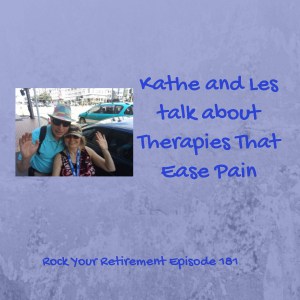- Culture
- SEE MORE
- classical
- general
- talk
- News
- Family
- Bürgerfunk
- pop
- Islam
- soul
- jazz
- Comedy
- humor
- wissenschaft
- opera
- baroque
- gesellschaft
- theater
- Local
- alternative
- electro
- rock
- rap
- lifestyle
- Music
- como
- RNE
- ballads
- greek
- Buddhism
- deportes
- christian
- Technology
- piano
- djs
- Dance
- dutch
- flamenco
- social
- hope
- christian rock
- academia
- afrique
- Business
- musique
- ελληνική-μουσική
- religion
- World radio
- Zarzuela
- travel
- World
- NFL
- media
- Art
- public
- Sports
- Gospel
- st.
- baptist
- Leisure
- Kids & Family
- musical
- club
- Health & Fitness
- True Crime
- Fiction
- children
- Society & Culture
- TV & Film
- gold
- kunst
- música
- gay
- Natural
- a
- francais
- bach
- economics
- kultur
- evangelical
- tech
- Opinion
- Government
- gaming
- College
- technik
- History
- Jesus
- Health
- movies
- radio
- services
- Church
- podcast
- Education
- international
- Transportation
- Other
- kids
- podcasts
- philadelphia
- Noticias
- love
- sport
- Salud
- film
- and
- 4chan
- Disco
- Stories
- fashion
- Arts
- interviews
- hardstyle
- entertainment
- humour
- medieval
- literature
- alma
- Cultura
- video
- TV
- Science
- en
Therapies That Ease Pain Episode 181

How Can Sleep Help Your Pain?\nIn this 2nd episode of our 4-part series on pain, Les and I talk about an article on pain relief. Did you know that sleep also helps with dementia? When it comes to easing pain, It will depend on what the pain is. If the pain is caused by inflammation, it tends to go down as you sleep because your body is trying to heal itself. But there are other things that cause pain in your brain. For example, neuro pain. Your brain is running during the day on full but in sleep, your brain is resting so oftentimes the neuro pain also rest along with your brain. This is a combination of healing and calming your body when we\u2019re talking about not skimping on sleep.\nIf you\u2019re working while you\u2019re sick your sickness is going to last longer. You\u2019re going to feel horrible longer because you didn\u2019t give yourself time to heal. That is why, in any case when it comes to chronic pain sleep is really important.\nCombining the Treatments is the Key to Ease Pain\n\nIn the last episode, Les touched on the fact that he\u2019s been having pain at night and he\u2019s been taking Ibuprofen so that he can sleep. It\u2019s been helping him wake up with no pain. Also, removing some devices like cell phones, lights, before you sleep, helps. Sometimes when Les is in pain he just gets up and walks around. But a lot of people don\u2019t want to move because it hurts to move. Oftentimes people would have pain and they\u2019ll not use that area of your body that has pain and that is when atrophy comes in. Maintaining an active lifestyle or being proactive will help you feel better if you want to ease the pain.\nPhysical Activity Can Ease Pain and Improve Your Ability to Move Through the Day\nA physical therapist can help you with this, it doesn\u2019t have to be lifetime physical therapy but they can help you. They can offer strength and stretching exercises that are tailored to your own needs and on your own abilities. There are also certain posture improvement programs such as the Alexander Technique and Feldenkrais. These posture improving programs can really help ease the pain. Because as you get older a lot of the pain is in your back and it\u2019s usually because of the bad posture. When Les tries to improve his posture even when he\u2019s walking, it makes a difference.\nThe article talks about Tai Chi and yoga and how it helps manages pain. But what we\u2019re doing is Qigong, it\u2019s kind of like Tai Chi but it\u2019s more on meditative movement. The article talks about the mind, body connection. That\u2019s what that kind of movement with meditation does, it connects the body and mind. It\u2019s definitely relaxing and you feel less pain after the session.\nMindfulness\nTypically, in Cognitive Behavioral Therapy, you get 7-10 sessions and the therapist can teach the patient to identify thoughts and behaviors that actually worsen pain and replace them with a new thought pattern designed to calm the nervous system and ease the pain. You can ask your doctor for a referral and you can look for a therapist that has training on this kind of therapy.\nWhen you go to a massage therapist it\u2019s helpful to know what kind of training they\u2019ve had. A chiropractor, for instance, would be helpful because they understand anatomy and physiology. It\u2019s important to pay attention to that because you go to a massage therapist that doesn\u2019t help you might be because they don\u2019t understand your body that well.\nAcupuncture also helps with pain but you have to go to somebody who knows what they\u2019re doing and that\u2019s not easy to find necessarily.\nAcupuncture, massage therapy and the type of chiropractic that Les was doing are not covered by Medicare. Sometimes when we're dealing with our health,